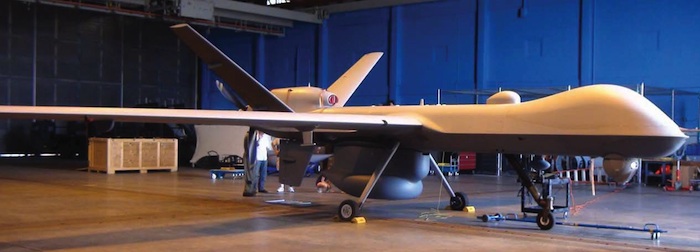
The expanding use of drones over U.S. airspace has become a fast-growing national security topic and privacy concern. We asked our colleague Paul Rosenzweig, who co-authored a recent Heritage Foundation paper on drones, to weigh in.
Flying drones—unmanned aerial vehicles—have been made famous by their use in the war on terrorism, notably through lethal strikes on terrorist targets in Iraq and Afghanistan. Such drones are a small fraction of those used by the United States today. There are thousands of drones, used for a wide variety of purposes, from scientific research to military operations.
Drones, mostly without a weapons capability, are employed by the government and the private sector. Because of the drones’ wide-reaching surveillance capabilities, however, even unarmed drones could threaten personal privacy and civil liberties. As the FAA develops regulations for the operation of drones in domestic skies, it must take into account constitutional concerns and privacy rights.
In a research paper for the Heritage Foundation, (see bottom of story) I and three colleagues gave some thought to what the right set of rules and regulations might look like. Here, in summary are some thoughts about how drones should be used domestically.
First, we should consider the redlines or limitations:
- The use of drones in a military capacity (while armed) should be severely restricted to situations of actual invasion or insurrection.
- The use of drones for domestic surveillance of First Amendment activity is fundamentally at odds with U.S. constitutional principles.
- Drones equipped with novel sensor arrays ought not to be permitted absent a clearly demonstrated need and a careful consideration of countervailing privacy and civil liberties concerns.
- Drones should not be used as a platform for the collection of massive unstructured data sets that could form the basis for sophisticated tracking and behavioral analytics.
- Drones are unsuitable for use as a routine means of surveillance in non-threatening situations.
On the other hand, there are plenty of situations where domestic drone use is both sensible and practical and where our effort should be to authorize and regulate the use, rather than limit it or restrict it. For example, consider these uses:
- Border Patrol Security
- Long-term surveillance of a specified area or route
- Emergency Preparation and Disaster Response
- Planning routes and anticipating vulnerabilities
- Catastrophic effects and remediation planning
- Emergency cell coverage restoration
- Deterrence of criminal behavior in unpatrolled areas
- Agriculture
- Crop dusting (pesticides) or infestation eradication
- Monitoring of crop growth
- Maritime Domain Awareness
- Long-term surveillance of a specified area or route
- Environmental Monitoring
- Wildlife tracking
- Monitoring droughts and flooding
- Monitoring locks, dams, and levees in remote areas
The list can go on. And of course in any such listing there will be value judgments and choices that need to be made. So the fundamental recommendation that the paper makes is for Congressional engagement. After all, these are interesting, difficult and indeterminate choices we will be making – isn’t that what our elected representatives are for?
[field name=”drones”]






